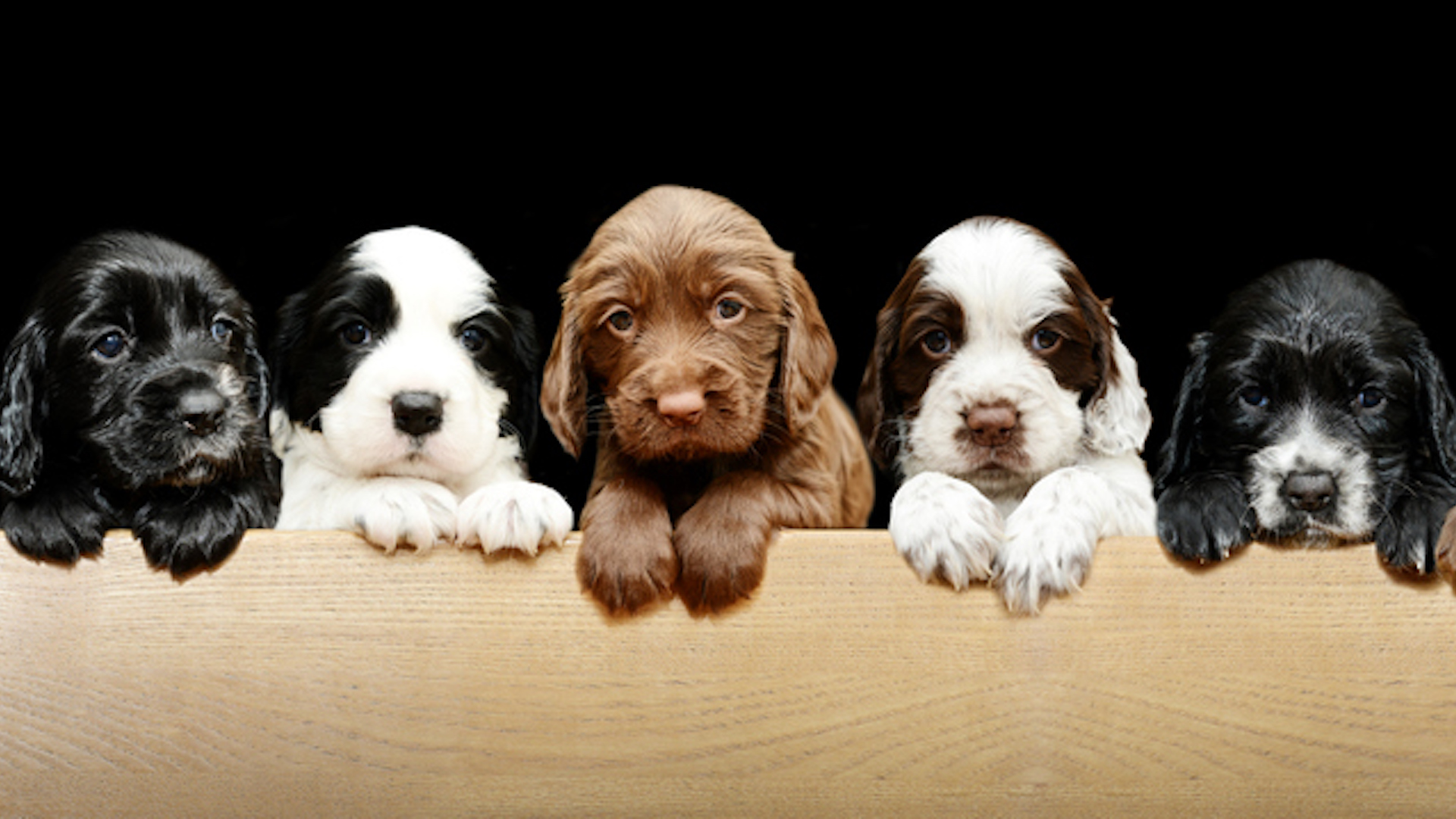
Puppies are one of life’s great joys. What better sight than a pile of adorable fluffy bodies tumbling over one another in their litter with their mom proudly (sometimes exasperatedly) watching? Or the little rascals gaining confidence and starting to find their way in the big wide world.
In those first few floppy, clumsy weeks and months of life, puppies undergo remarkably rapid transformation, from blind, deaf, toothless, helpless fur bundles into intrepid little explorers with expressive personalities. It's no wonder they need the best puppy food to support all these areas of development.
But puppies are not just remarkable for their extraordinary growth and development, they’re interesting and enthralling too, every step of the way. Let’s take a look at some fascinating facts about puppies.
32 facts about puppies
1. Rapid growth
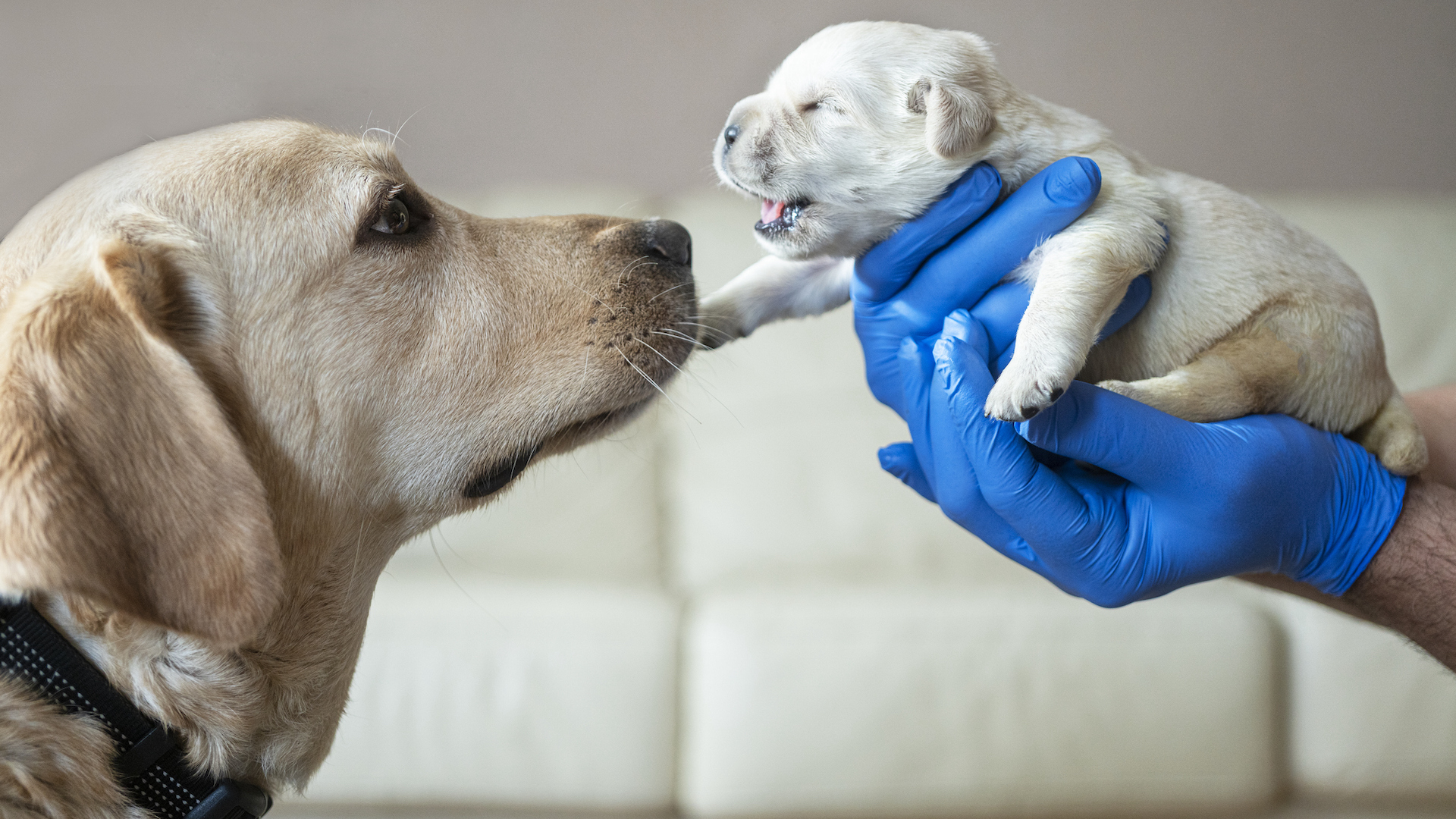
Puppies grow extremely fast, doubling their birth size within a week, and on average reaching full size by a year old, though this varies hugely according to breed. When they are born, they are about 1–5% of their expected adult weight. Puppies experience the fastest growth rate in the first six months, and most of them will have reached 60% of their adult height by the age of 16 weeks.
Toy breeds are fully grown by six to eight months, while a giant breed may not be fully mature until two years.
Be careful to feed breed-specific puppy food to allow for these differences in growth rates. If the giant breeds grow too quickly, they can suffer developmental joint problems as their skeleton cannot cope with such rapid growth. They are also particularly sensitive to the correct levels of calcium while their bones are growing.
Even once a dog’s skeleton is fully grown, they will continue to develop fat and muscle.
2. Sense development
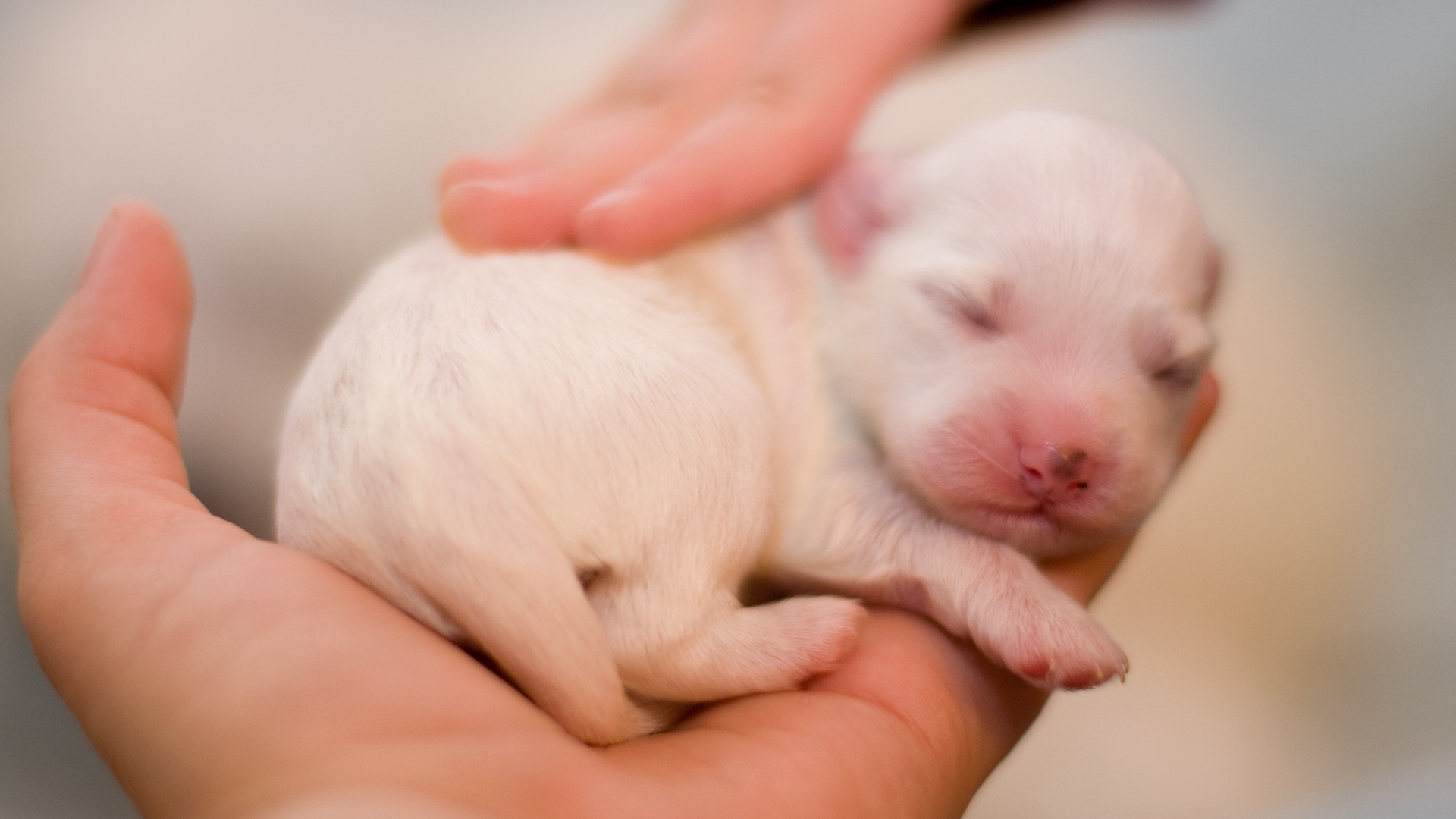
Puppies are born with very limited senses. They cannot see or hear, and so are very dependent on their mother to nurture them. However, these two senses develop rapidly. By two weeks old, the eyes start to open and their sight begins to develop, while their sense of hearing is the last to come in – by about three weeks of age. But by the time they are an adult, their sense of hearing is about four times better than the average human’s.
3. Window of socialization

Between three and 14 weeks is a critical window in a puppy’s life in terms of socialization. This is a period of rapid brain development, when puppies are aware of their environment and able to respond. This is the time to make sure they meet plenty of people and other pets, so that they can gain experiences and learn to interact appropriately.
A journal published in Veterinary Medicine found that puppies that were not exposed to humans before 14 weeks were not able to develop normal bonds with humans later on.
4. Sweet breath

Doggy breath is not famous for its aromatic odor, quite the opposite. However, a young puppy’s breath smells almost sweet. It’s thanks to a combination of having clean teeth, feeding on mother’s milk (rather than the stinky foods, not to mention the other things that they try to eat later on), and the different bacteria in their baby mouths.
While that sweet breath will fade as time goes by, you can lessen the chances of bad breath by knowing how to brush a dog's teeth daily thereby warding off periodontal disease which can cause bad breath.
5. Fur changes
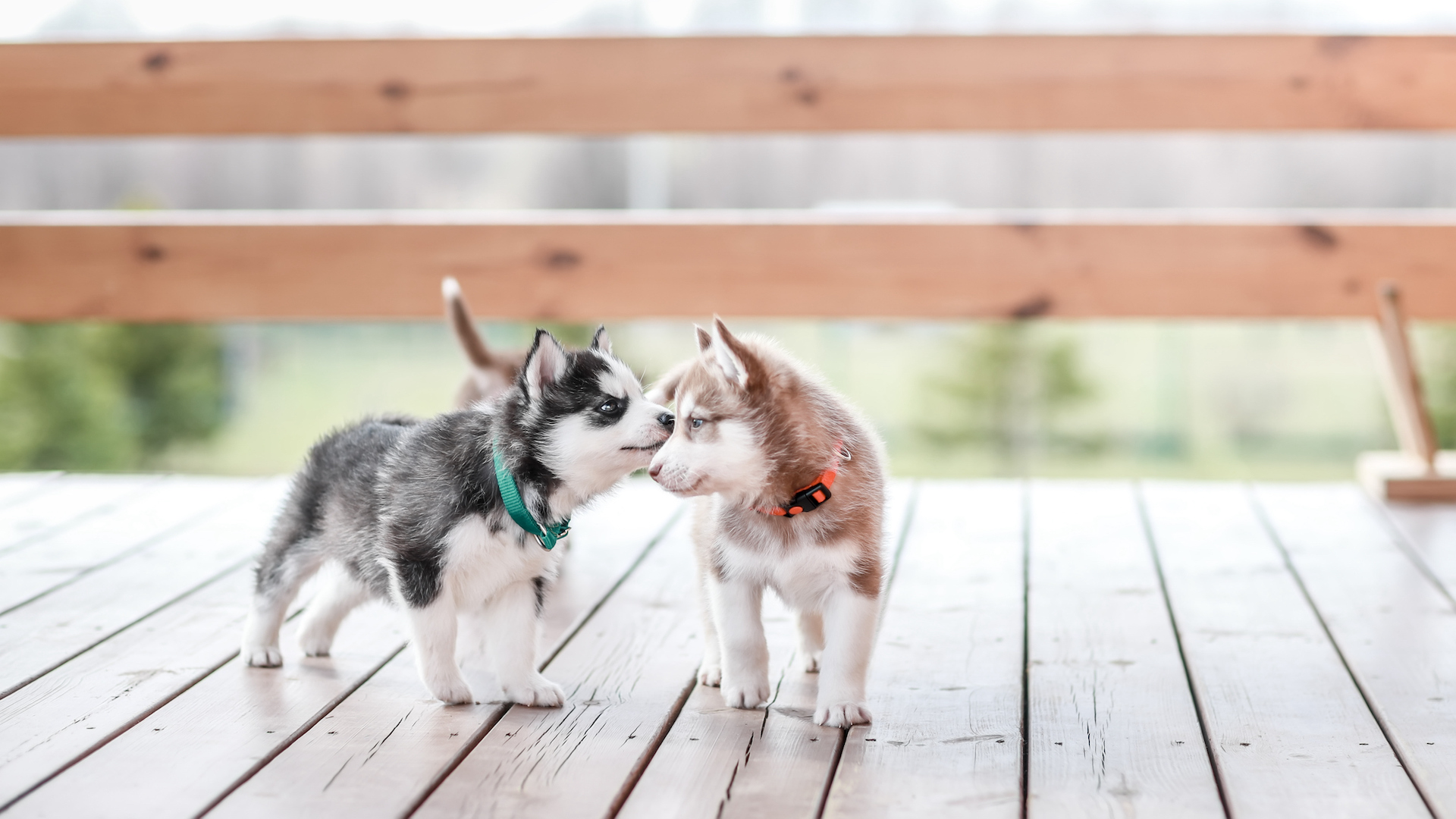
Puppies are born with a single coat of fluffy fur, which they lose at around four to six months – though this varies widely. It is replaced usually by two layers of adult fur (although there are many breeds with a single coat) which is less fluffy and thicker than their baby fur.
Puppies changing their coats usually look a little ruffled and shaggy, and while some undergo dramatic shedding, with others you’ll hardly notice. However, we still recommend regular grooming with the best dog brushes to help your puppy stay looking their best.
6. Sleeping beauties
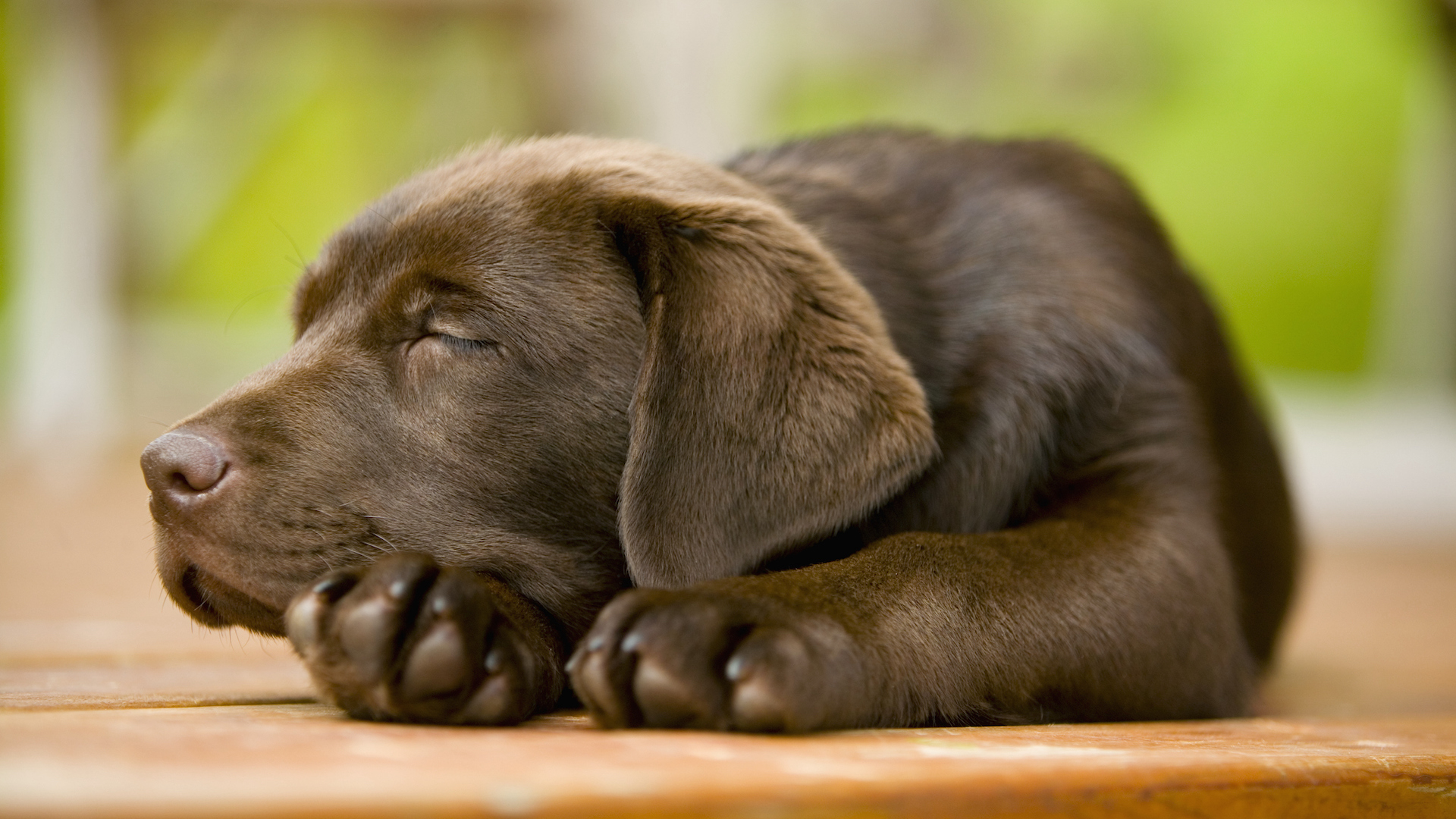
Ever wondered how much sleep does a puppy need? Turns out, they need a lot of sleep. Newborn puppies will spend about 90% of their time – around 22 hours – sleeping for the first couple of weeks of their lives. This will gradually decrease so that by the time they are six months old, they will adopt a more adult pattern of around 12–14 hours a day.
Puppies need to sleep so much for development and growth, brain development, replenishing their energy levels, releasing growth hormones, and aiding digestion.
7. Unique noseprint
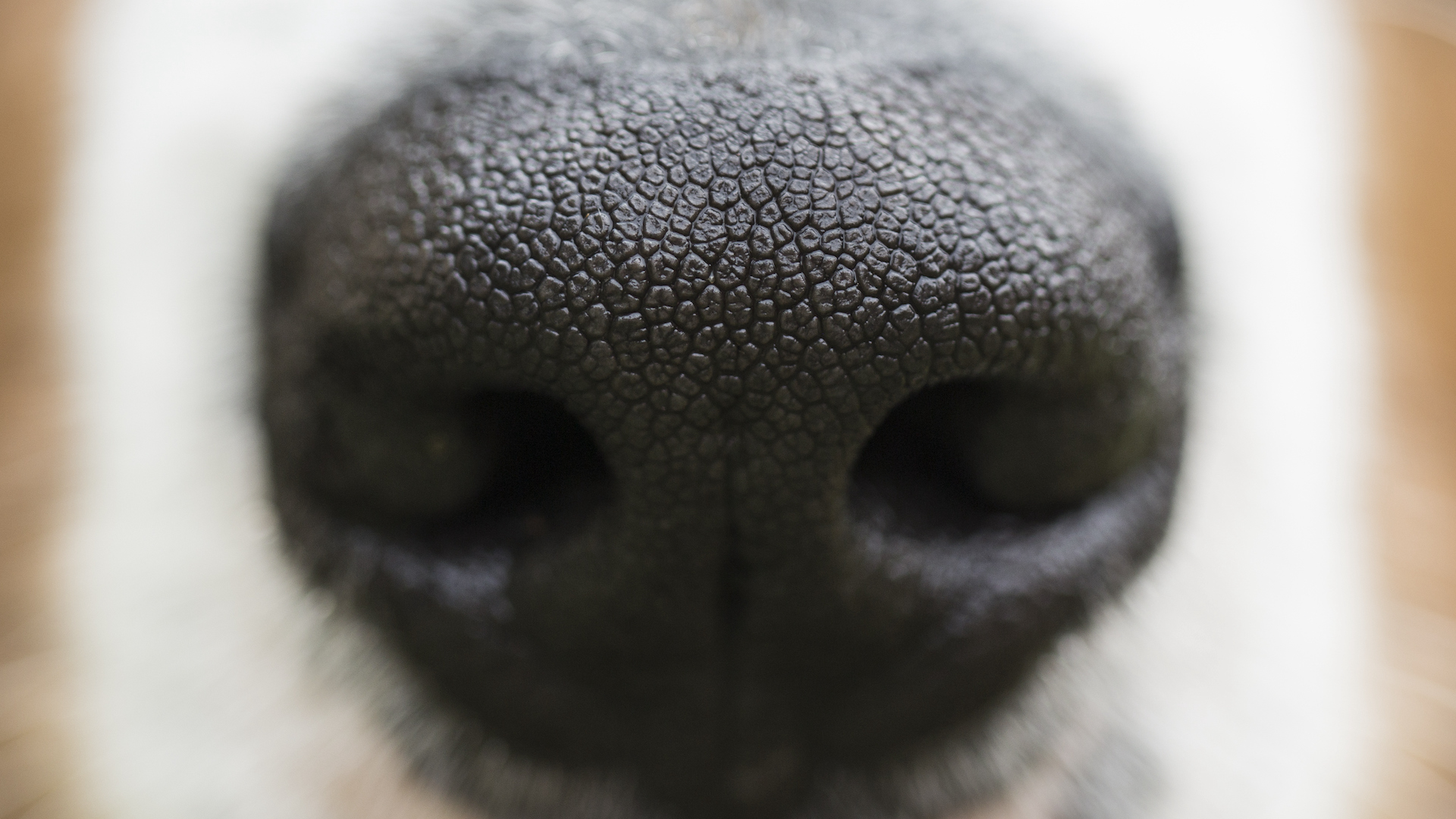
There aren’t masses of research on dogs’ noseprints, although there is enough evidence to substantiate claims that each one is unique, like our fingerprints, and this is cemented while they are still very young.
A study looking at Beagle puppies published in Animals (Basel) found that each pup had a unique nose pattern that was formed by the age of two months and remained the same as they grew and matured. It indicated that the nose pattern could be used as a unique biometric marker.
8. Puppy eyes
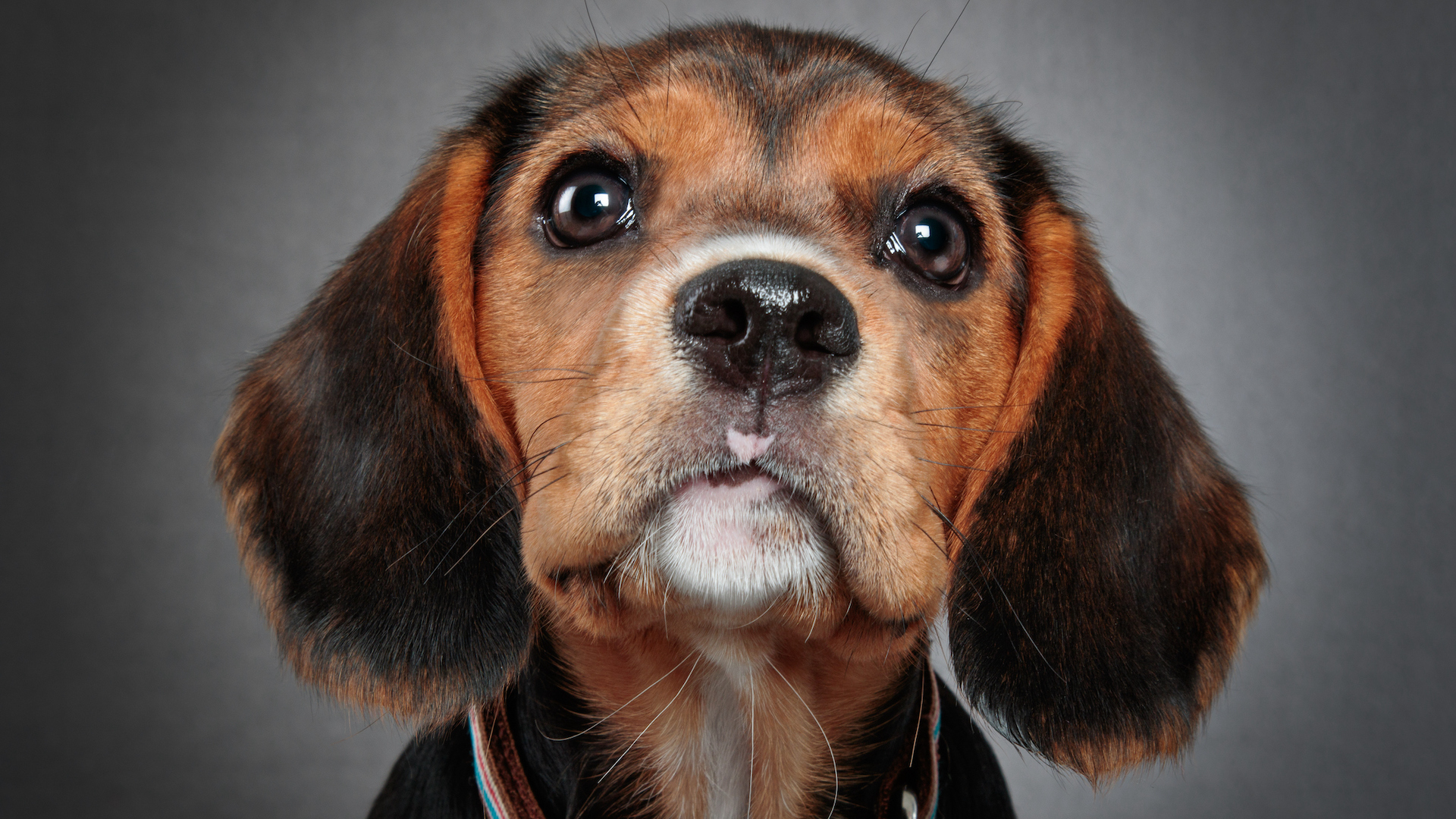
That beseeching look! Even adult dogs have irresistibly cute eyes that make us want to nurture them, thanks to their particular muscles around the eyes that enable them to communicate with us, according to research on canine facial anatomy at Portsmouth University. This is exaggerated in puppies, as they have larger eyes in proportion to their heads compared to adult dogs, eliciting a strong instinct to look after them.
9. Nails, but no teeth
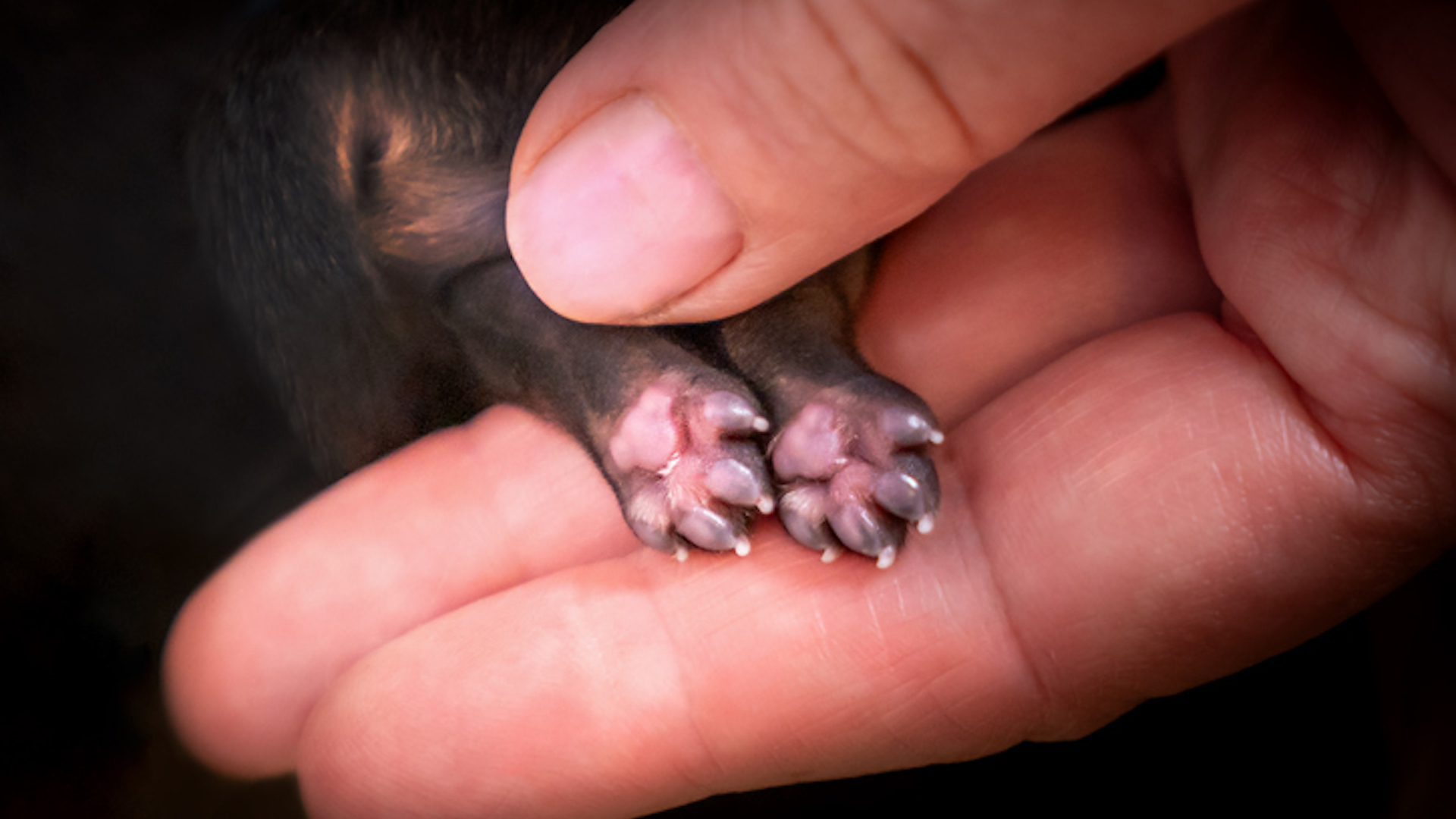
That’s right, newborn puppies can scratch but they can’t bite – initially at any rate. Puppies are born toothless, but they emerge with sharp little nails – which will start needing clipping from around four weeks old, around the same time as their baby teeth come through. Learn how to cut a dog’s nails so that you can get your puppy used to it from the start.
10. Poor temperature regulation
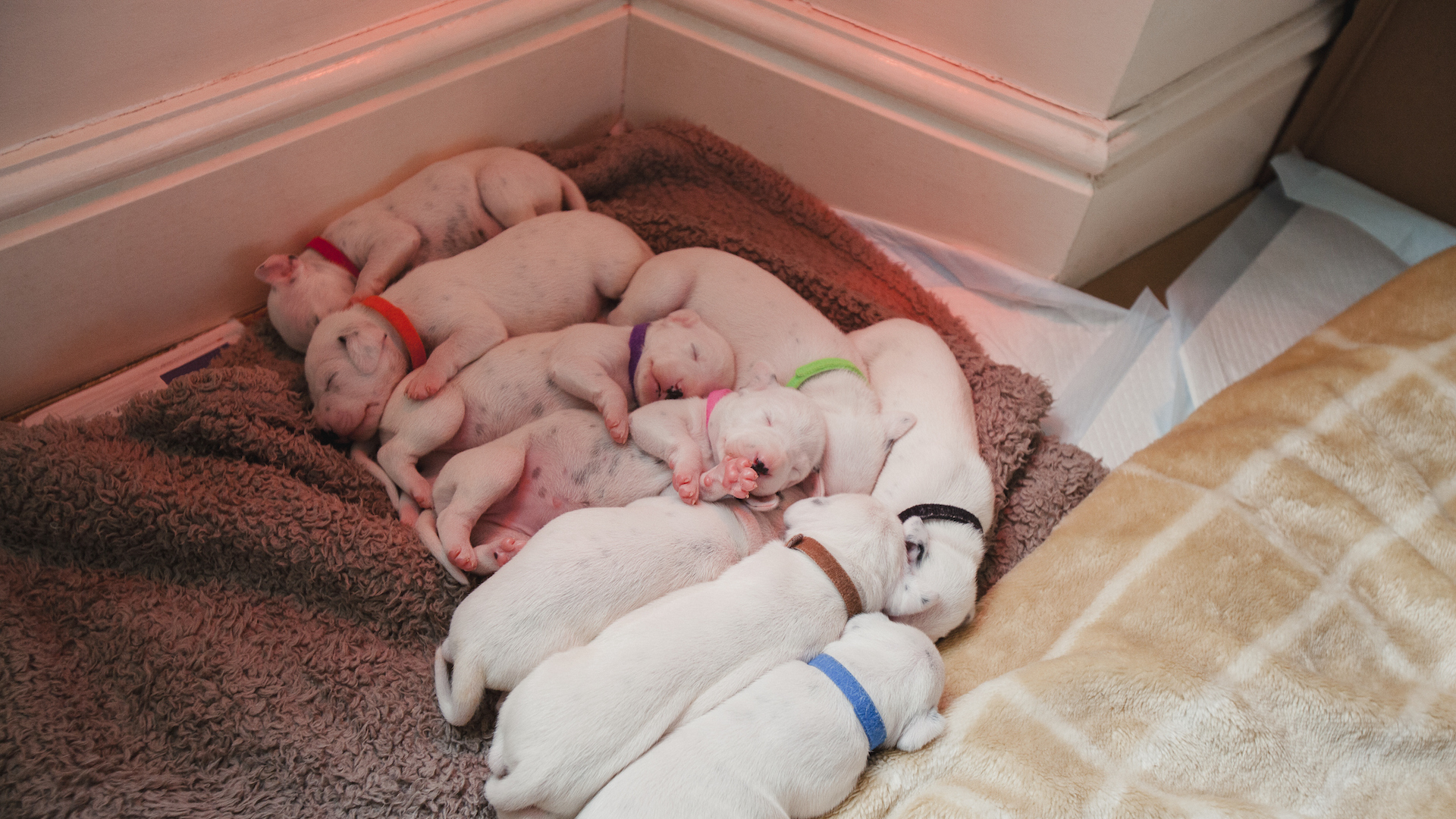
Young puppies are not good at regulating their body temperature, so they need to be kept in a warm environment for all their bodily processes to function well. This is not usually a problem as their mother’s body heat and littermates will keep them warm, but it’s advisable to keep the room temperature at around 85–90ºF for the first few days.
By the time they are a week or two old, they can start to maintain their own body heat, but they remain vulnerable to low temperatures for several weeks.
11. They need to be told to go to the bathroom
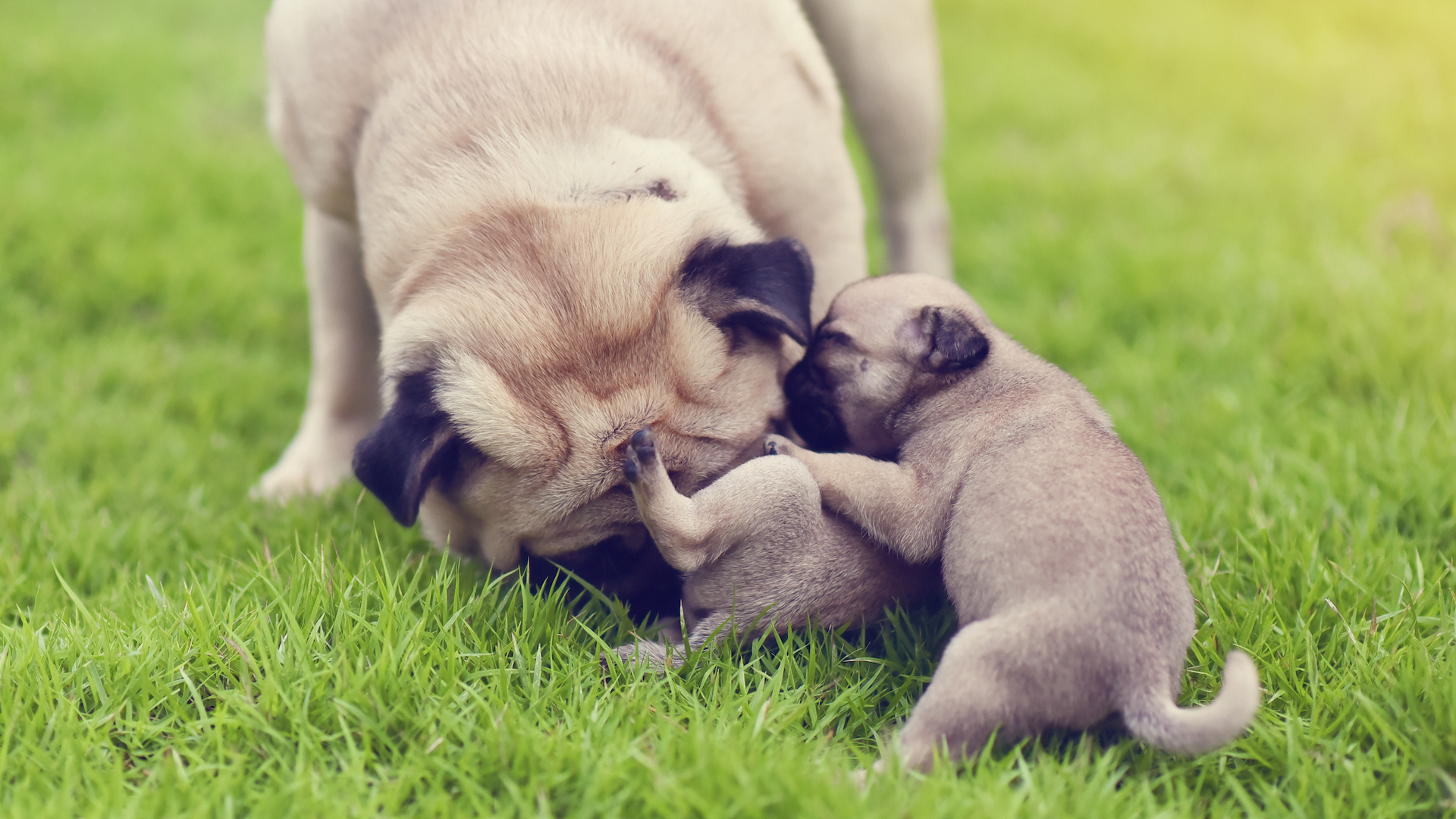
Puppies can’t pee or poop on their own instinctively until they are around three weeks old. Their mother needs to stimulate the reflex that tells them to eliminate waste. Typically after a feeding session, the mom will lick and groom her puppies’ private parts, which prompts them to go to the bathroom.
Puppies that are orphaned will need a human to stimulate them instead.
12. Doubling their weight

It varies according to breed and circumstance, but puppies typically double their birth weight within just a week, according to a study in Veterinary Medicine and Science on puppy growth in the first three weeks.
13. They might not see or hear, but they can make a noise!
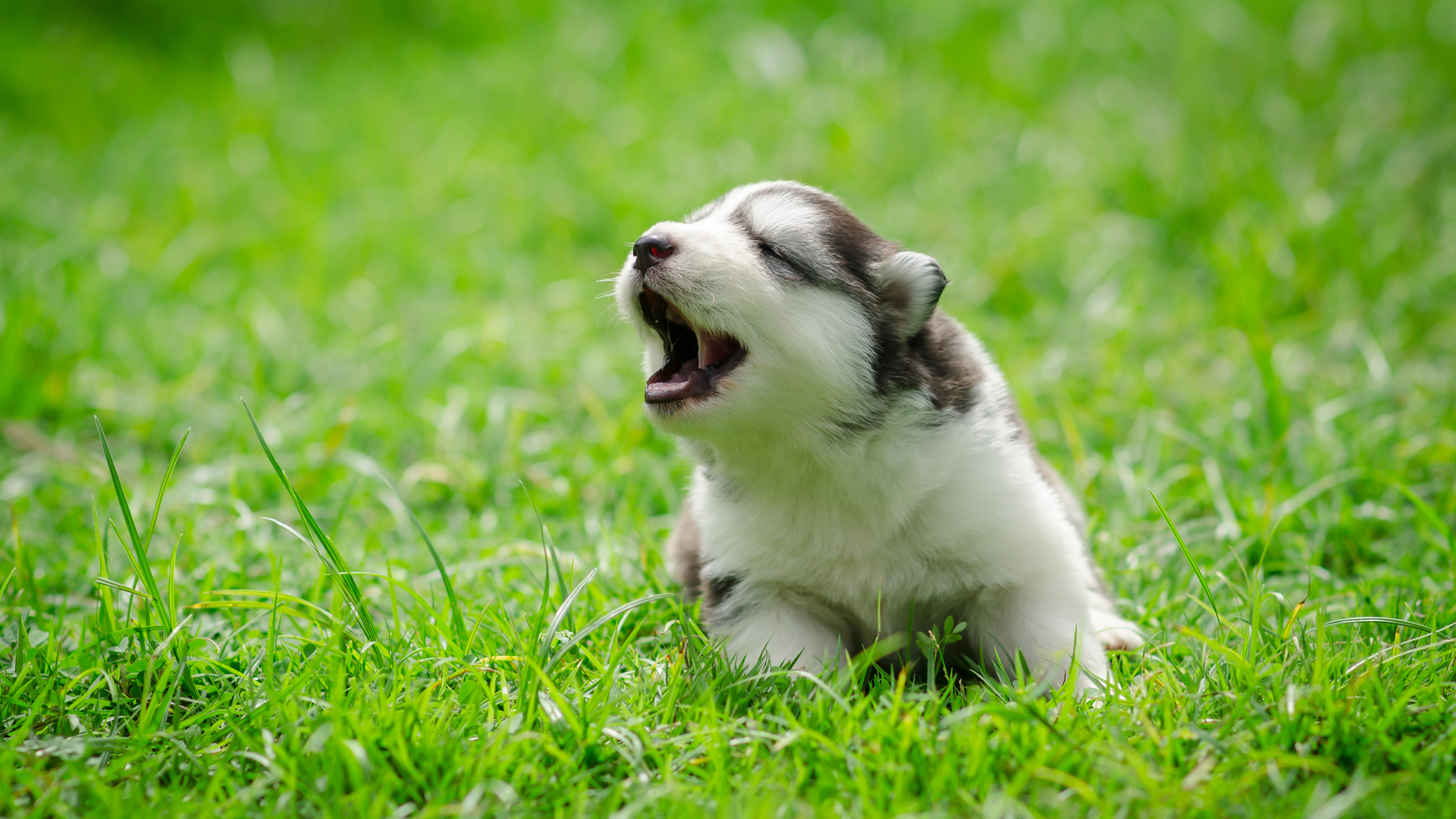
Although puppies are blind and almost deaf at birth, they can vocalize from the outset. What starts as little chirps at birth – their tiny voices being their only way of seeking help or finding their mom – gradually turns into grunts, yips, and eventually howls and barks as they find their full vocal range.
14. Puppies are born with blue-gray eyes

Nearly all puppies are born with what looks like blue eyes – which is the reflection and refraction of light on the iris. The eyes are in fact colorless, and the true color will not develop until eight to 12 weeks, following on from the melanin production which is kickstarted at around three or four weeks. By four months, your puppy’s eye color is likely to be set.
The exception is albino dogs, whose eyes may appear pinkish at birth due to the lack of pigment around the eyes.
15. When the tail starts to wag
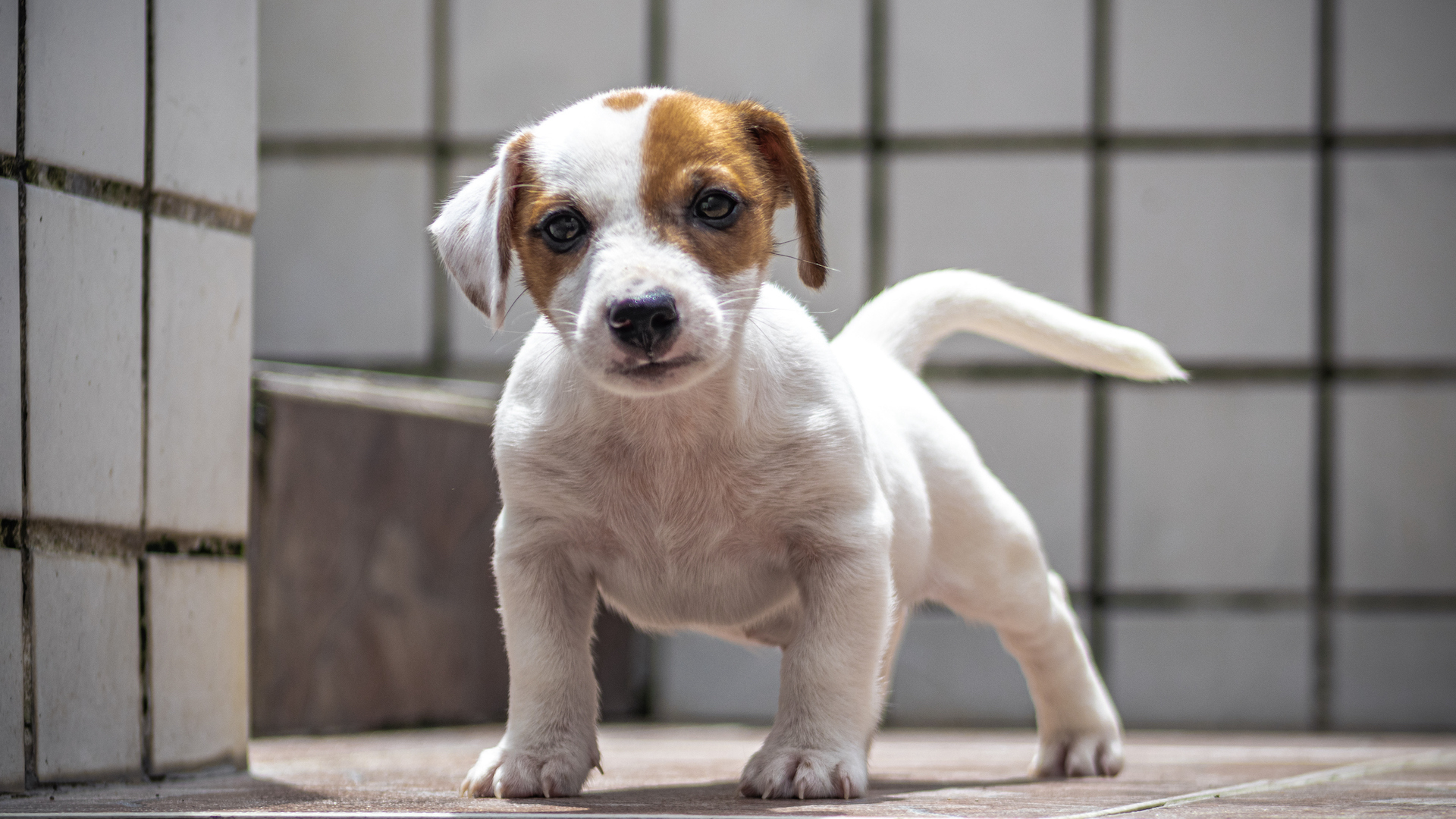
Wagging tails are possibly the cutest thing about dogs, in the way they communicate their happiness and other emotions. But this instinctive action doesn’t start until around three or four weeks old in a puppy, as he develops a bit of lingo with his mother and litter-mates.
16. Mom time

Puppies should stay within their litter until they are at least eight weeks – and some experts recommend up to 12. Keeping puppies with their mom boosts their immune system, and makes them less likely to be exposed to infectious diseases. Furthermore, a good mom will instill manners as part of her role as leader of the litter, and they will learn how to behave around their litter-mates, which will stand the pup in good stead for the big wide world. Puppies who are separated from the litter too early are more likely to show fear, aggression, anxiety, and other inappropriate behaviors, according to research from the Cornell College of Veterinary Medicine.
17. Specialized diet

Puppies require specific puppy food to provide for all their nutritional requirements. This should also vary according to their breed, as small and large breeds have different growth rates and nutritional needs. But don't forget to leave room for the best puppy treats.
18. The myth of puppy fat
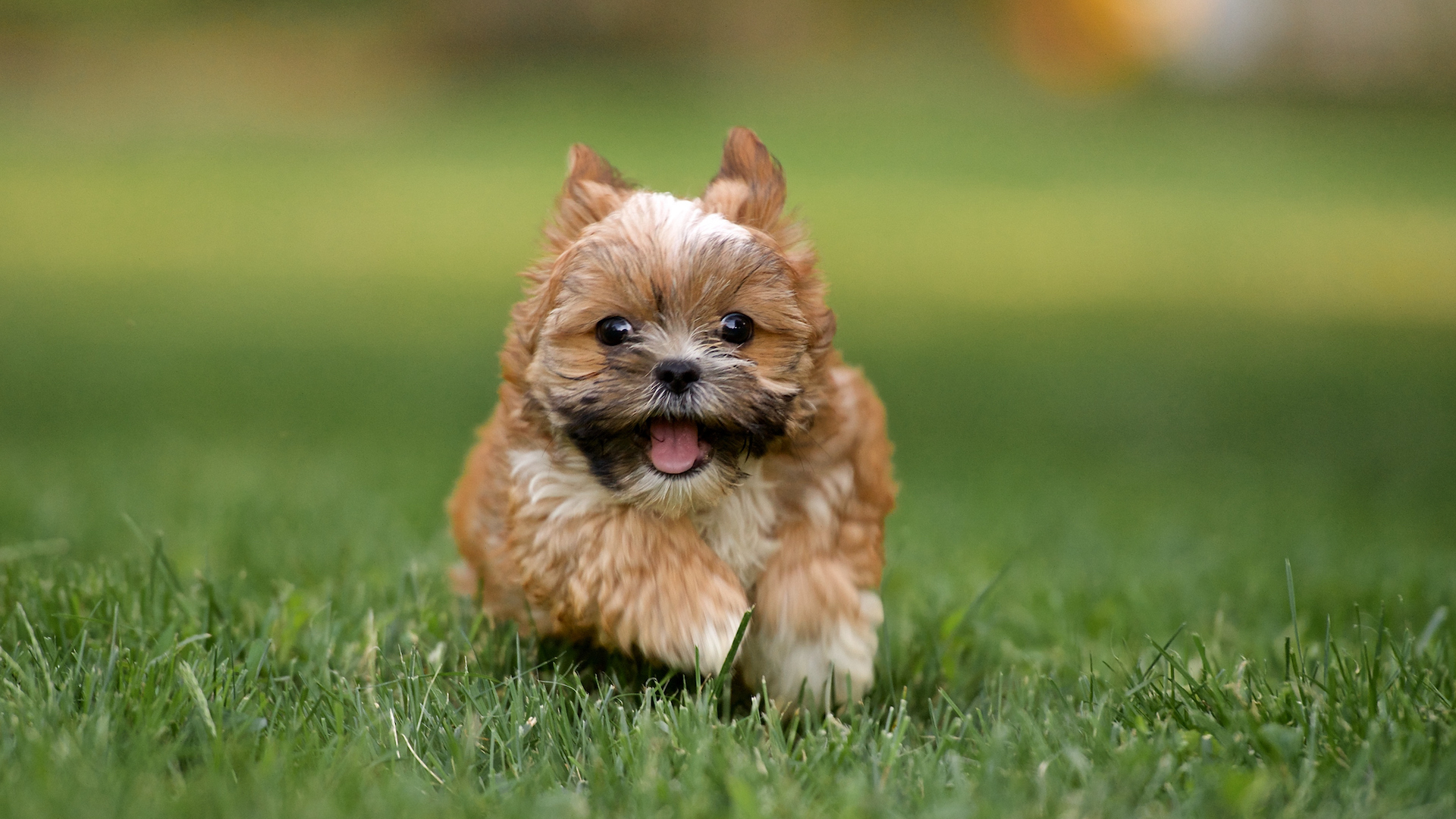
An overweight puppy is more likely to become an overweight dog. Puppies should not be fat. Just because they are smaller than adult dogs, with shorter legs and fluffy fur does not mean they should be plump. Overweight puppies are much more likely to cause damage to their joints.
19. Puppies bite
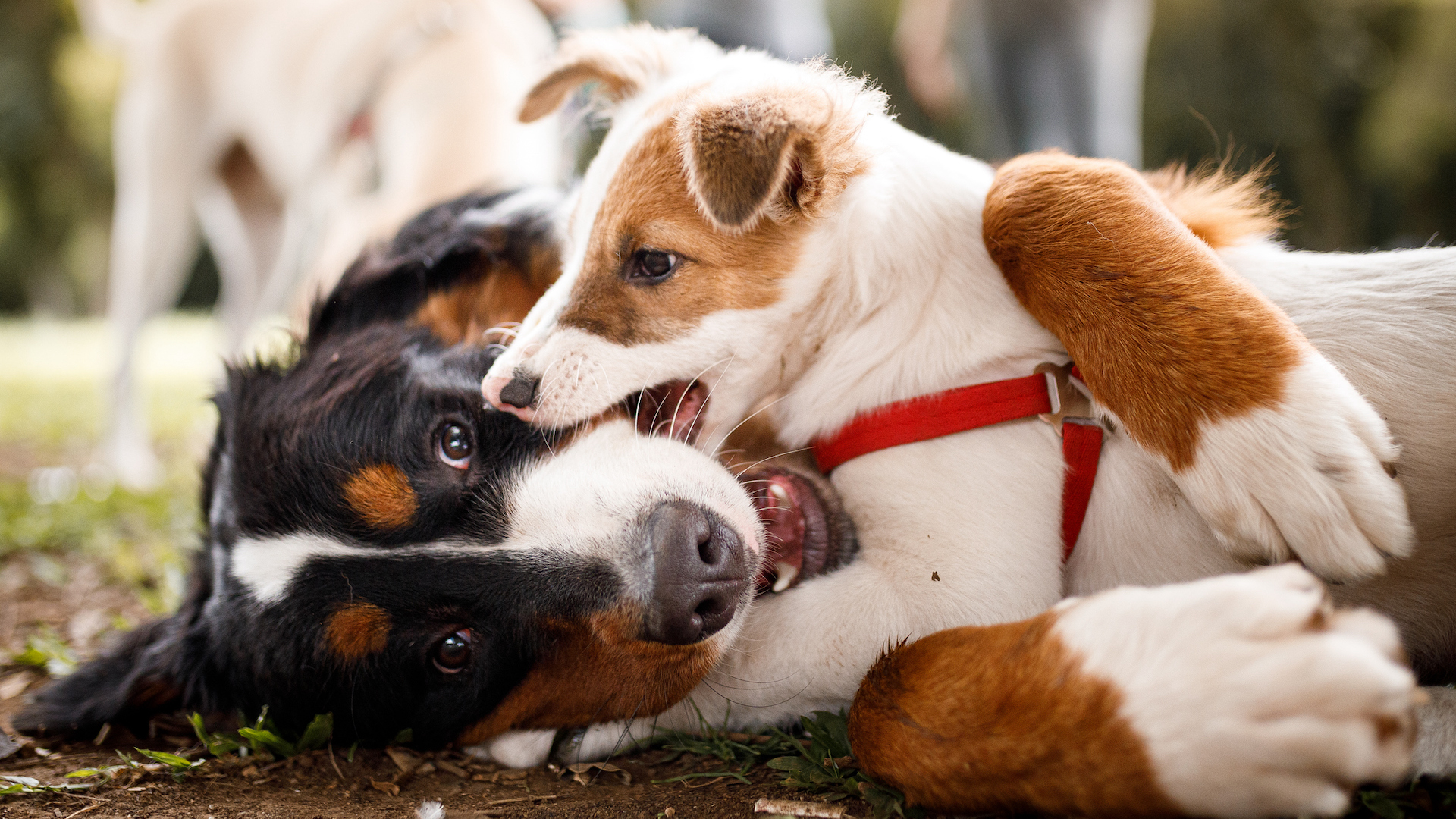
Biting is an exaggeration but those little teeth are sharp! Puppies do explore the world with their mouths, and they tend to chew everything in sight, partly to soothe their gums, but also because playful biting is normal puppy behavior as they rough and tumble in their litter. This is where knowing how to train a puppy not to bite will come in handy, and so will the best teething toys for puppies.
20. Puppy crashes

Puppies have incredible spurts of energy – but only for a very short time. After a burst of exuberance they often suddenly crash and fall fast asleep. But beware, they are merely replenishing their energy levels for the next tornado of activity!
21. Teething
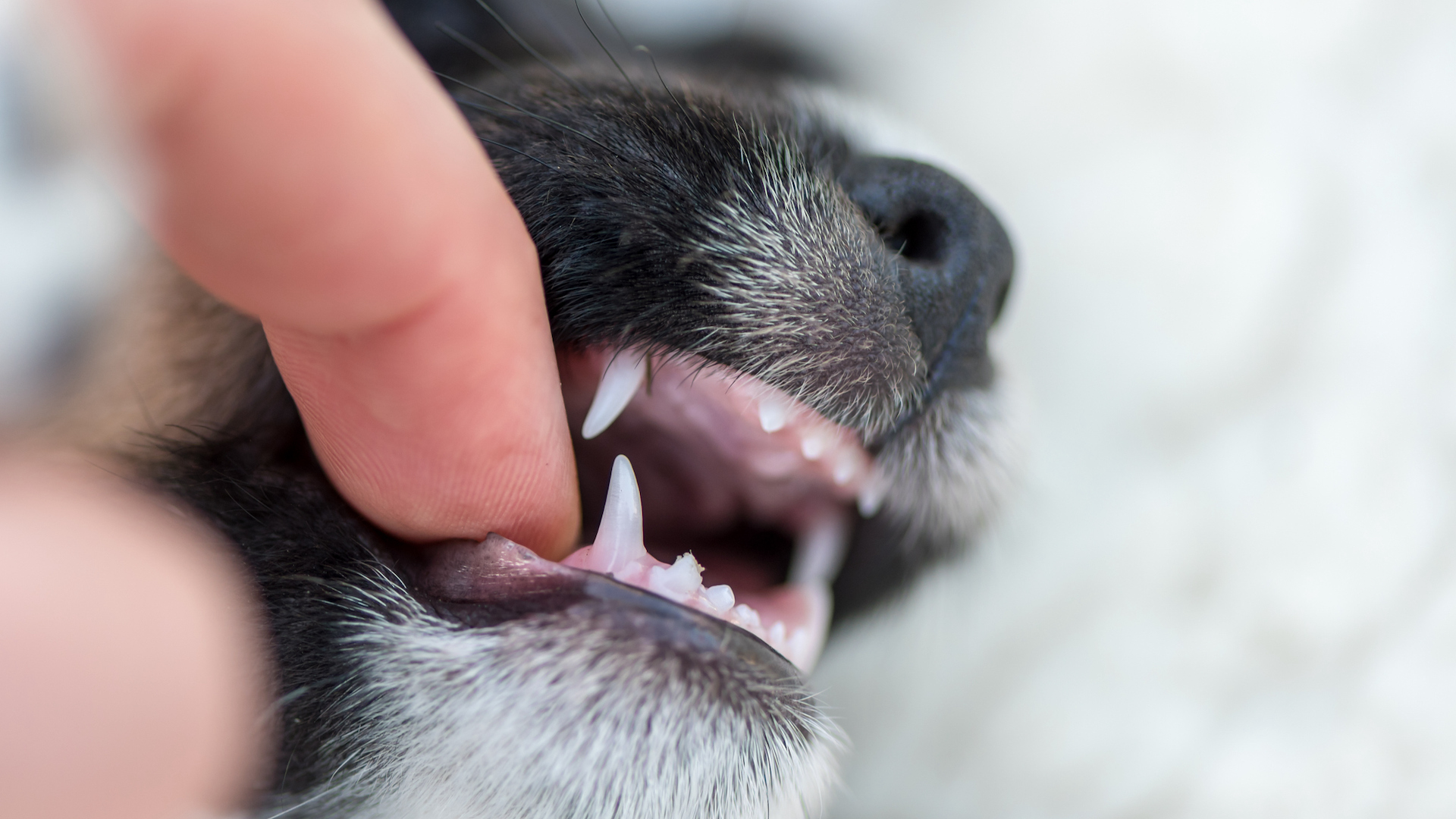
Like humans, puppies are born toothless, then grow deciduous baby teeth which fall out and are replaced by adult teeth. However, it all happens a whole lot faster in canines than in humans. The set of baby teeth typically emerge at around three weeks, and by six or seven months they are all gone and the adult set is in.
22. Endless playtime
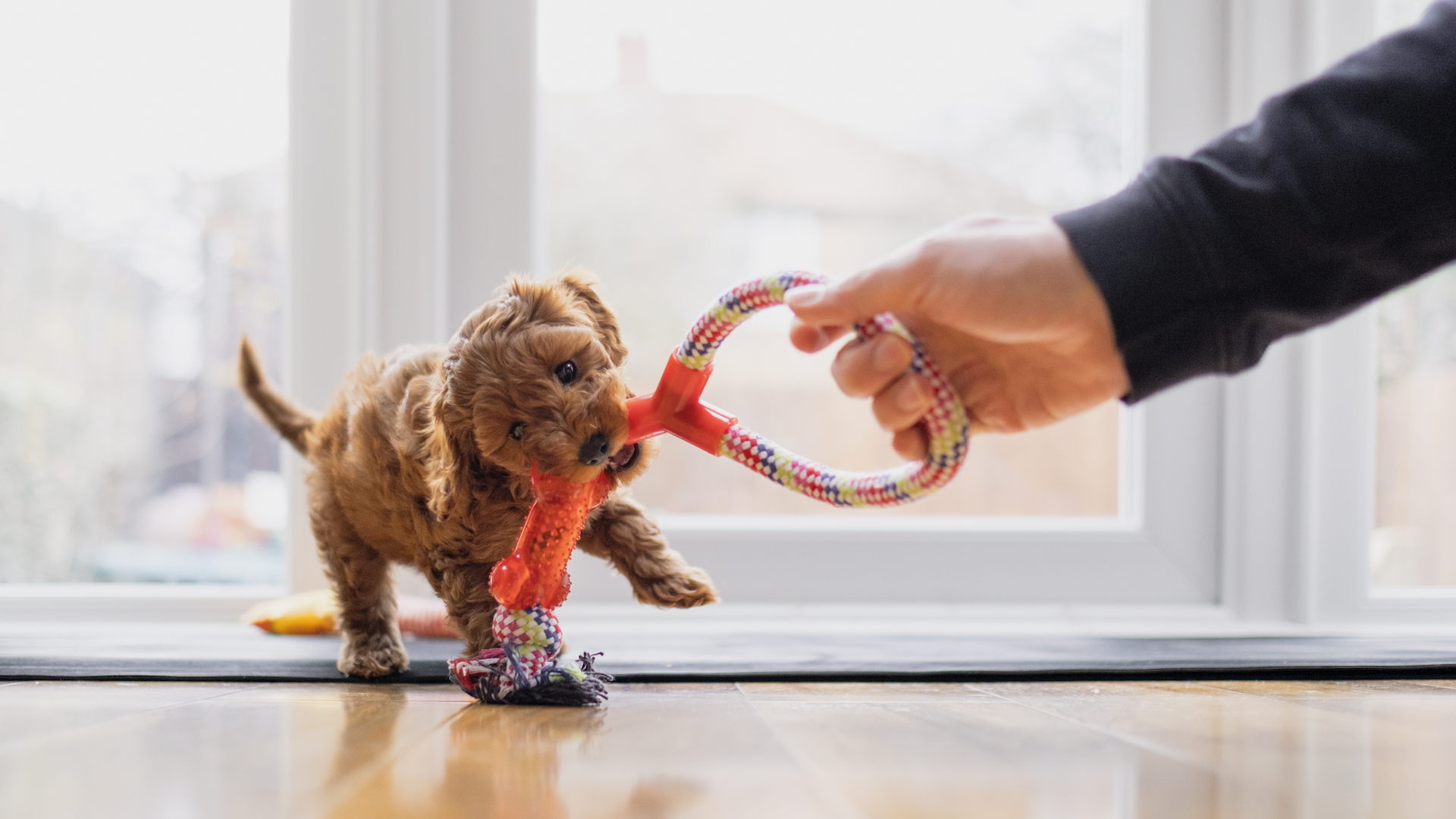
Have you ever tried out-playing a puppy? Chances are you can’t do it, they can play all day long.
Puppies not only love to play, but they need playtime. It is a fundamental part of their life, playing a major role in how they develop, burn calories, and ward off boredom and frustration by stimulating them physically and mentally. So if you don’t have time to fulfill this vital cog in their development process, find a friend, family member, or trainer who can help out. Bear in mind it also helps you bond, so it’s best if you can do it yourself – plus it’s super fun!
Great games for puppies include hide and seek, chase, and fetch. They also love a toy box, so stock up with plenty of the best puppy toys and teddies to keep them entertained.
Bonus: they might even conk out afterward to give you a rest. They will do best with short sessions, especially when they are young, so as not to exhaust them physically and mentally.
23. Rarity of identical twins

Litters of puppies are technically fraternal twins, triplets, and so on – being born at the same time and sharing a womb. But genetically identical canine twins, developing from one egg, which splits and forms two embryos which share a placenta, are very rare, though it is possible that many cases go undocumented.
24. Dalmatians are born without spots

Coat color and markings can change as the puppy matures, especially in the case of Dalmatians, who are born without their trademark black spots. Their first spots begin to appear at about ten days, but continue developing until the dog is around 18 months old.
25. Sense of smell

While puppies are born without the senses of sight or hearing, their sense of smell is present from birth. They use this sense to navigate their new world – as well as plenty of help from their mom.
Dogs have a special part of their olfactory apparatus called the Jacobson’s organ, in the roof of their mouth, which enables them to identify their mother from other nursing moms, by enhancing their sense of smell. Later on, this organ will come in useful in identifying pheromones for mating.
26. Vulnerability

Puppies are particularly vulnerable to illnesses, such as parvo and distemper, in their first few months. Their immune system isn't fully developed, and although they gain a certain amount of protection from their mother’s milk and will start to have vaccinations from around eight weeks old, viruses can prove fatal in young puppies.
27. Paw size – adult size
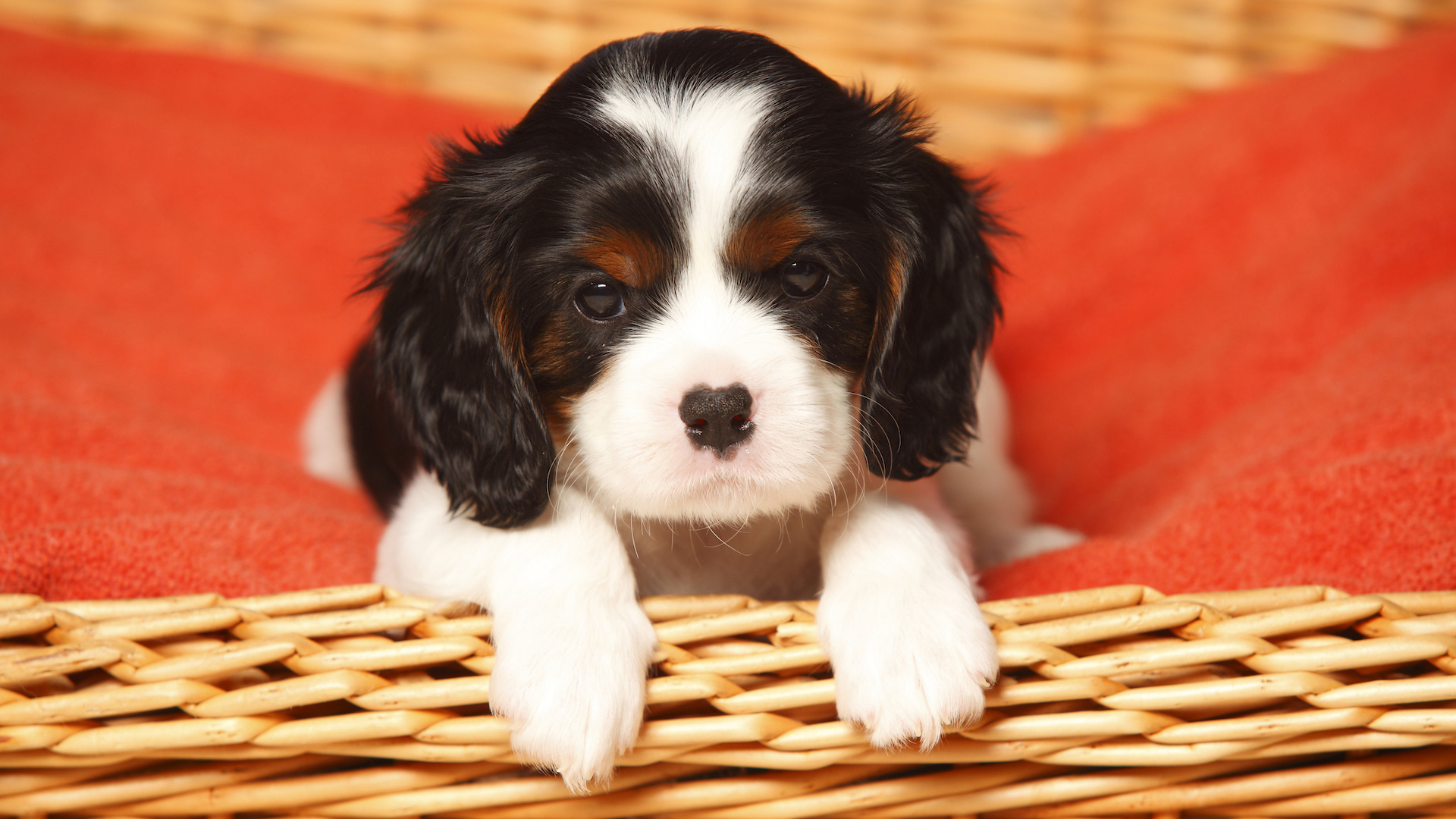
Generally speaking, the larger the paw size, the larger the adult dog, but this is not an accurate predictor. Some large breeds, such as greyhounds, tend to have smaller feet than relatively smaller breeds such as bulldogs.
28. When a pup grows up
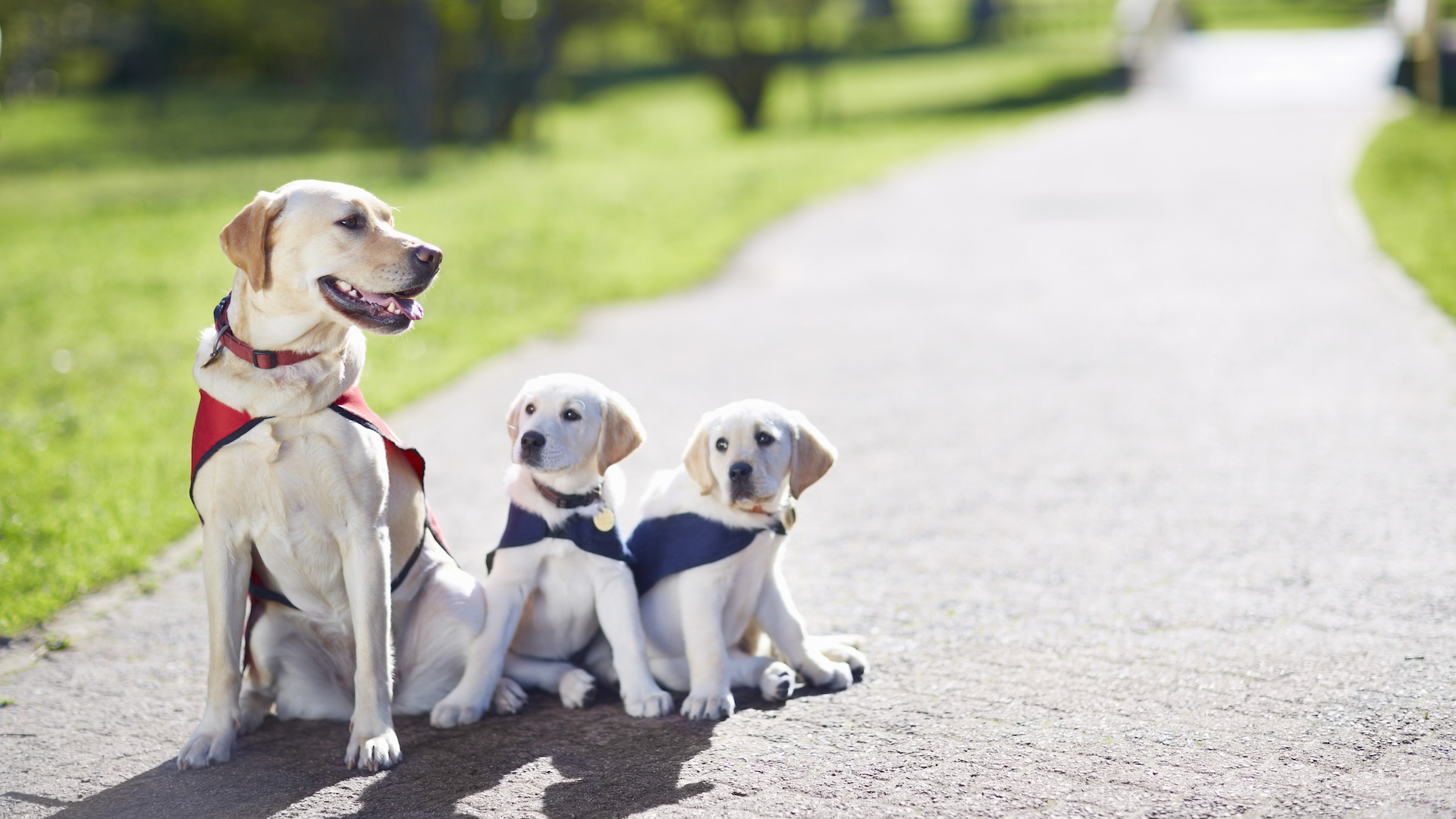
A puppy is not considered an adult dog until at least a year old. Although toy dog breeds typically mature from around eight months, giant breeds can take up to two years to be fully grown. Until this time, they will need a puppy-specific diet to support their nutritional and developmental requirements.
29. Touchy feely
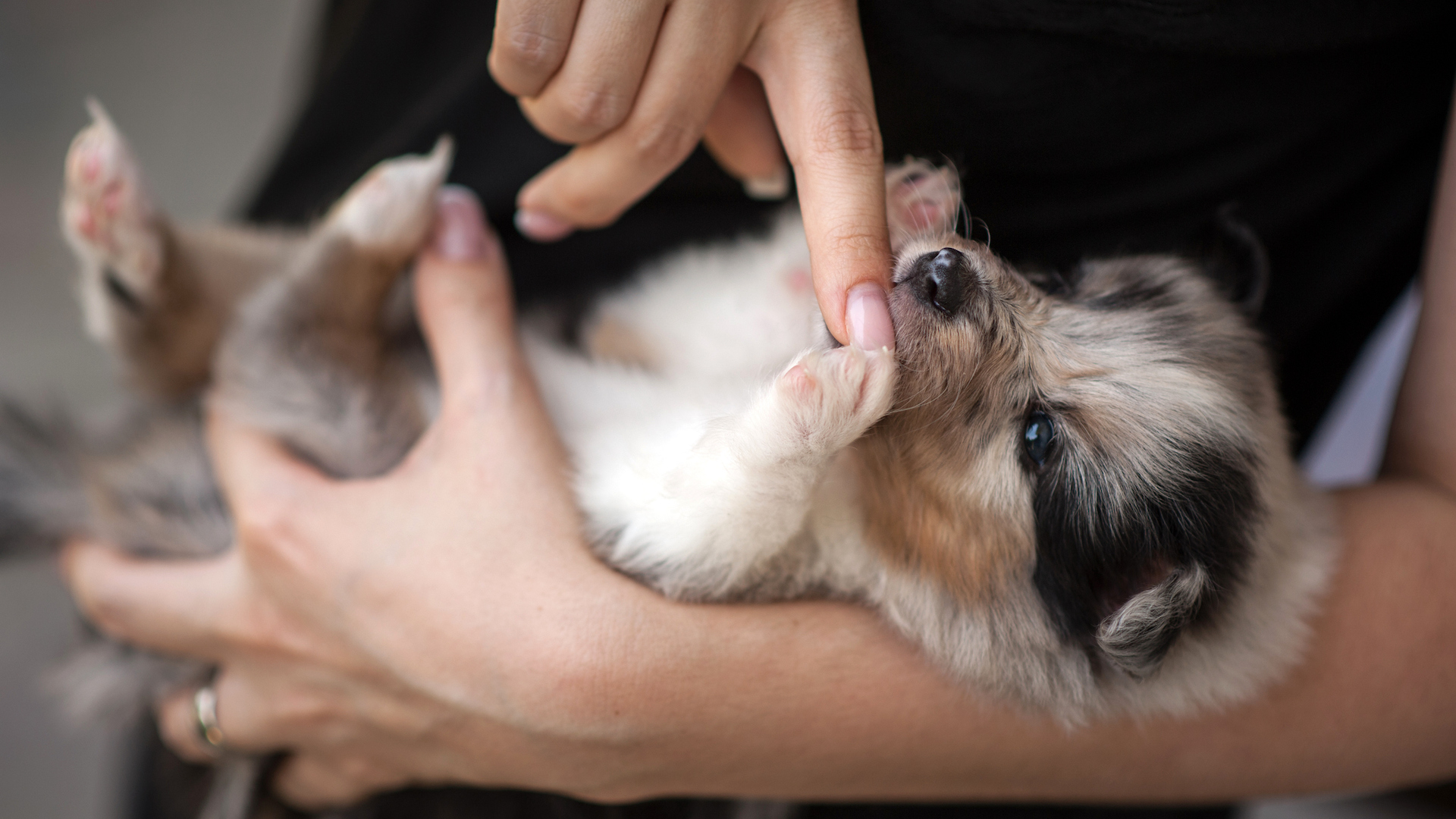
While puppies’ ear canals and eyes are closed at birth, their sense of touch develops immediately. Almost from the moment they are born, their mom will start licking them to stimulate this sense, prompting them to respond and to poop and pee.
30. The word “puppy”

The word “puppy” goes back to the 16th century and is likely to have originated from the French world “poupée” which means doll or toy. Previously they were called “whelps”. Some literary experts believe it was William Shakespeare who first used the word puppy, in his play The Life and Death of King John.
"Here’s a large mouth, indeed,
That spits forth death and mountains, rocks and seas,
Talks as familiarly of roaring lions
As maids of thirteen do of puppy-dogs!"
31. Quick pregnancy
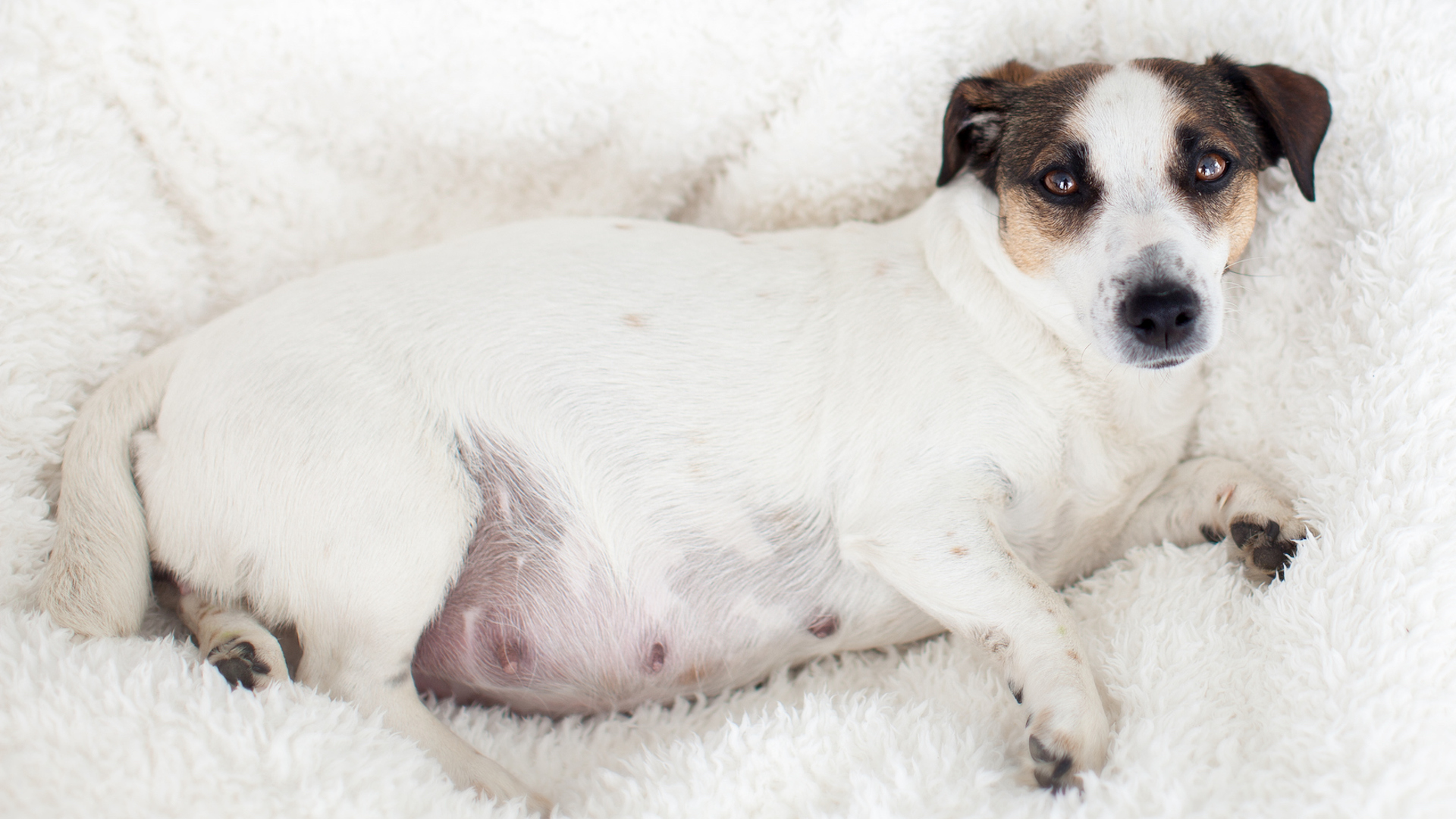
Female dogs may have to carry large litters, but they only have to do so for a few weeks. The canine gestation period is 58–68 days, similar to a cat’s – compared to a horse’s pregnancy which lasts 11–12 months.
32. Bladder control
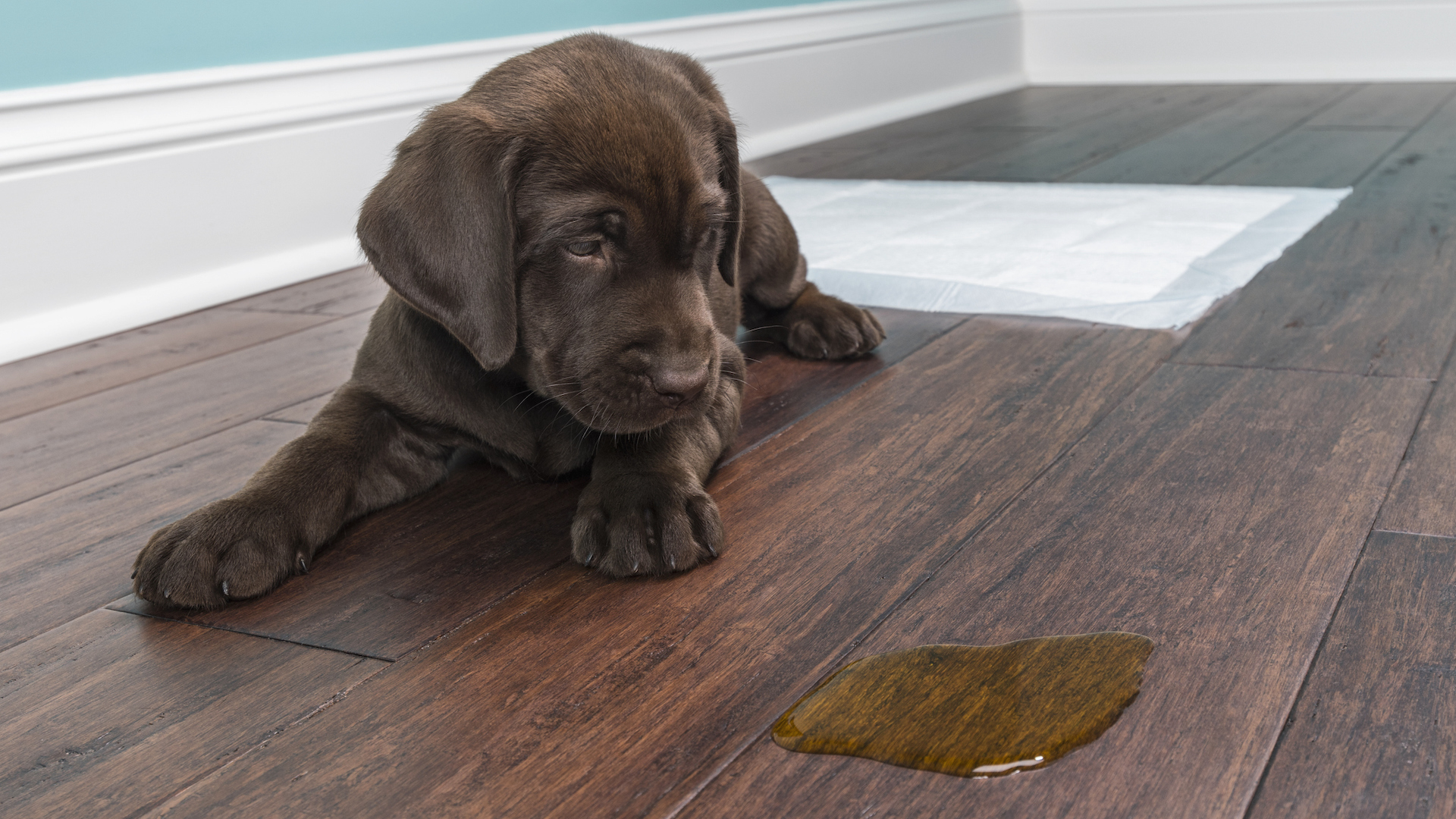
The general rule of thumb is that puppies can hold their bladder for around an hour for every month of life, plus one. So by the time a puppy is four months old, they should be able to last five hours between toilet breaks. However, you can’t really expect your puppy to control his bladder until they are around 16 weeks old. This will be a good time to learn how to potty train a puppy.







